There are wives who, as gifts from their husbands, receive flowers, jewelry, chocolates, vacations. Some, however, may happen to receive a castle as a gift: this is what happened in 1564 to Philippine Welser (Augsburg, 1527 - Innsbruck), the morganatic wife of Ferdinand II of Austria (Linz, 1529 - Innsbruck, 1595), governor of Tyrol, who that year decided to give her a sumptuous residence, Ambras Castle, just outside Innsbruck. The two had been united in 1557 in a morganatic marriage, the kind under which inheritance rights were not granted to children, and which usually took place between a member of a royal family and a person who did not belong to royal lineages or who sometimes was not even of noble birth (so much so that in modern times the term designates tour court the union between people of different statuses as a result of which wife and children are not entitled to succession and inheritance of property): Philippine was the daughter of merchants, and she had met Ferdinand during an official occasion. The two had fallen in love, and for once the story had a happy ending, for despite the difference in social class, Philippine and Ferdinand were able to marry in secret, in 1557, at the castle of Březnice in Bohemia: two years later, the marriage was recognized by Emperor Ferdinand I, on the condition that it remained secret and that the children were excluded from the succession. It was not until 1576 that the marriage was also recognized by the pope, and the couple could thus emerge from the state of secrecy in which they had always lived.
It was, of course, a very gilded secrecy: Ambras Castle is in fact one of the most important Habsburg residences, and it is moreover the only federal museum located outside Vienna. The present building was constructed at the behest of Ferdinand II himself: it sits atop a rocky outcrop overlooking the Inn River, and was built on the remains of an earlier fortress, Andechs Castle, which had been destroyed in 1133. Archduke Ferdinand’s idea, in line with the tastes and customs of the European nobility of the time, was to make the old fortress a magnificent Renaissance residence, especially since Ferdinand himself, who became Count of Tyrol just in 1564, was a humanist ruler, a supporter of the arts and letters, deeply passionate about art, and the possessor of a rich collection, which he had arranged inside the castle. Ferdinand’s manor was divided into two bodies, known as the “Upper Castle” (Hochschloss) and the “Lower Castle” (Unterschloss). The Upper Castle was the residential part, while the Lower Castle was designed as a place to house Ferdinand’s collection.
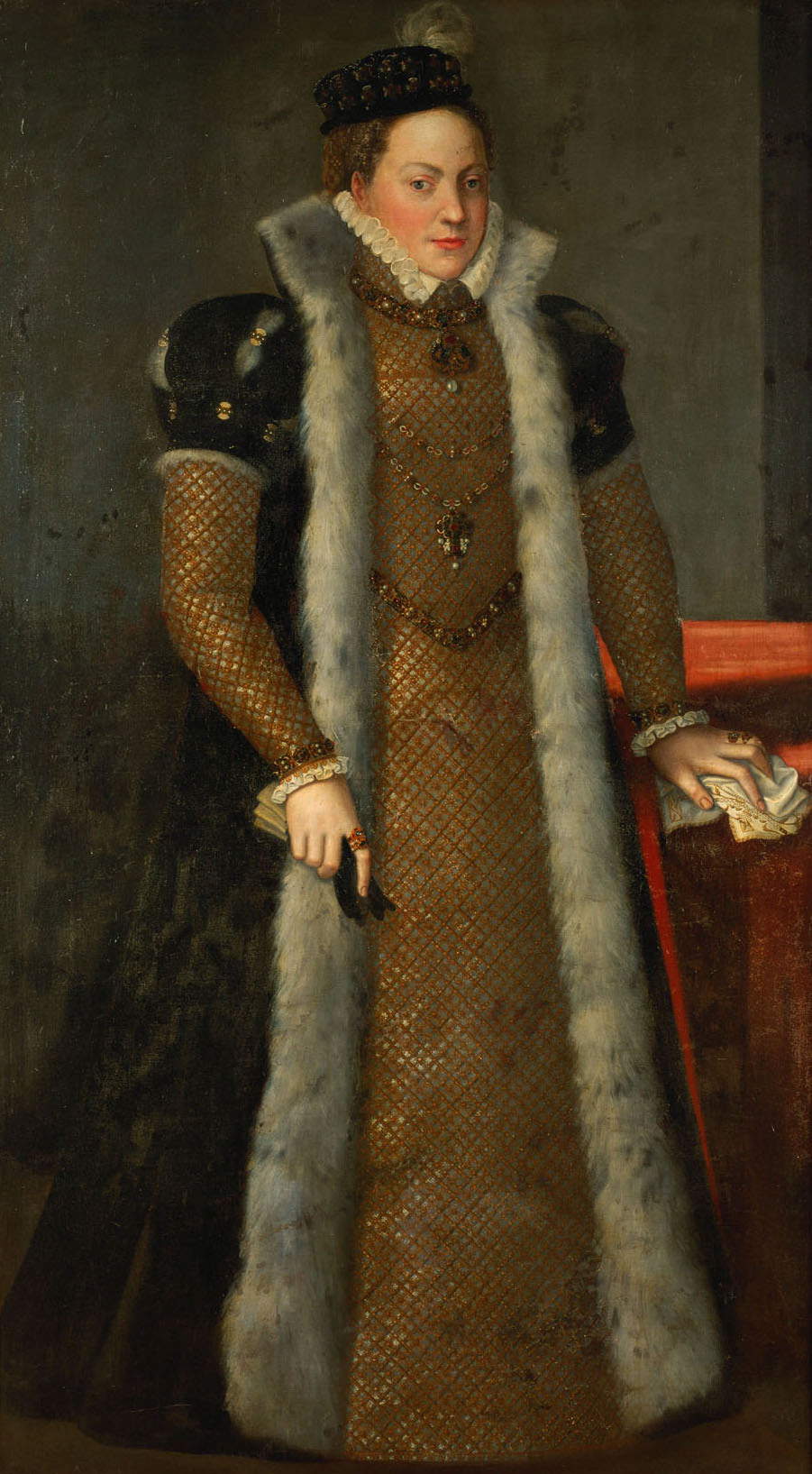 |
| Johann Bocksberger (attributed), Portrait of Philippine Welser (c. 1576; oil on canvas, 190 x 107 cm; Vienna, Kunsthistorisches Museum) ©KHM Museumsverband |
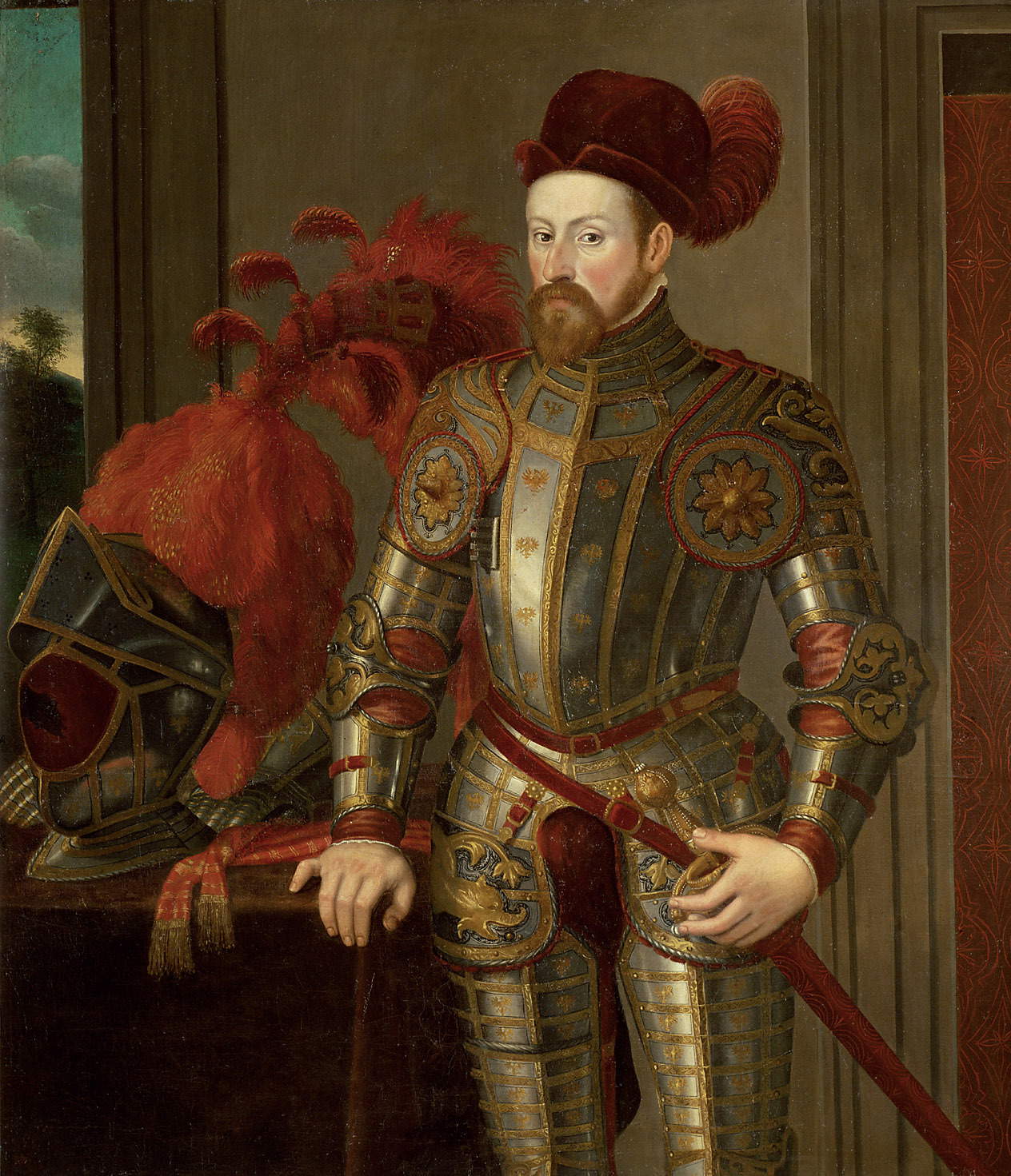 |
| Francesco Terzio (?), Portrait of Ferdinand II (c. 1550; oil on canvas, 135 x 130 cm; Vienna, Kunsthistorisches Museum) ©KHM Museumsverband |
There were three main nuclei of Ferdinand’s collection: theArmory, the Habsburg Portrait Gallery and the Chamber of Wonders. And each would merit an in-depth study in its own right. Ferdinand’s passion for collecting had begun when he was governor of Bohemia (the post he held before moving to Tyrol), and it is likely that he began there to acquire the first pieces of his fabulous collection. One of his main concerns for Ambras Castle was precisely to give a worthy location to his collection, so that it would also be open to visits: indeed, Veronika Sandbichler, director of Ambras Castle, recounts that Ferdinand often hosted “aristocrats, sovereigns from other European courts, members of the Habsburg family” who were familiar with his collection, which was already very famous at the time, so much so that “many wanted to see it or donate a family armor to display it in his armory.” Part of the castle, in essence, was born as a museum, and in that sense Ambras stands as one of the oldest museums in the world. It is not the oldest collection open to the public ever: the donation of Sixtus IV’s bronzes to the Roman people means that the Capitoline Museums precede Ambras by more than a century. However, the Castle is the oldest example in the world of a place that houses an art collection for exhibition purposes and from which the collection has never been moved. As evidence of the archduke’s intentions, there is also a pen drawing by Georg Hoefnagel (Antwerp, 1542 - Vienna, 1600), in which the term “museum” is used in reference to the collections at Ambras Castle.
The centerpiece of Ferdinand’s collection was theHeldenrüstkammer (theHeroes’ Armory), still one of the most spectacular passages in the museum: the archduke’s idea was to put together the armor of the most famous figures of his time and of previous centuries so as to preserve the memory of their exploits (especially those of the Habsburgs). Thus, in the great hall that the archduke had built, there are more than one hundred and twenty suits of armor, mostly from the 15th and 16th centuries: there is war armor, parade armor, jousting armor, there is horse-mounted armor, and there is also exotic armor, displayed in the Türkenkammer (“Turkish Room”).
The core of portraits, on the other hand, was displayed in the Habsburg Portrait Gallery: to this day, the collection, which continued to be enriched even after the death of Ferdinand II, has over two hundred paintings, some of which were also made by great artists, such as Lucas Cranach the Younger, Hans Burgkmair, Giuseppe Arcimboldo (to him is attributed a particular family portrait depicting Maximilian II, brother of Ferdinand II, and his wife Maria of Spain with their children Anna, Rodolfo and Ernesto), Titian (to whom is attributed the portrait of Emperor Charles V), Jakob Seisenegger (the portrait of Anna of Austria, sister of Ferdinand II), Anton van Dyck, Diego Velázquez, Justus Suttermans (author of the portrait of Anna de’ Medici), Lorenzo Lippi (present with a beautiful portrait of Vittoria della Rovere as a child). Entering the gallery is tantamount to taking a journey through history, through the social relations of the different eras, through the lives of the great personages on display here (from Charles V to Philip II of Spain, passing through all the families that were related to the Habsburgs, from the Valois to the Medici, from the Gonzaga to the Tudor). This is without calculating the extraordinary art-historical importance of the collection, since it makes it possible to study the evolution of the genre of the official portrait from the Gothic era to neoclassicism. It is one of the largest and most important galleries of portraits of sovereigns in the world, and finds space in the Upper Castle.
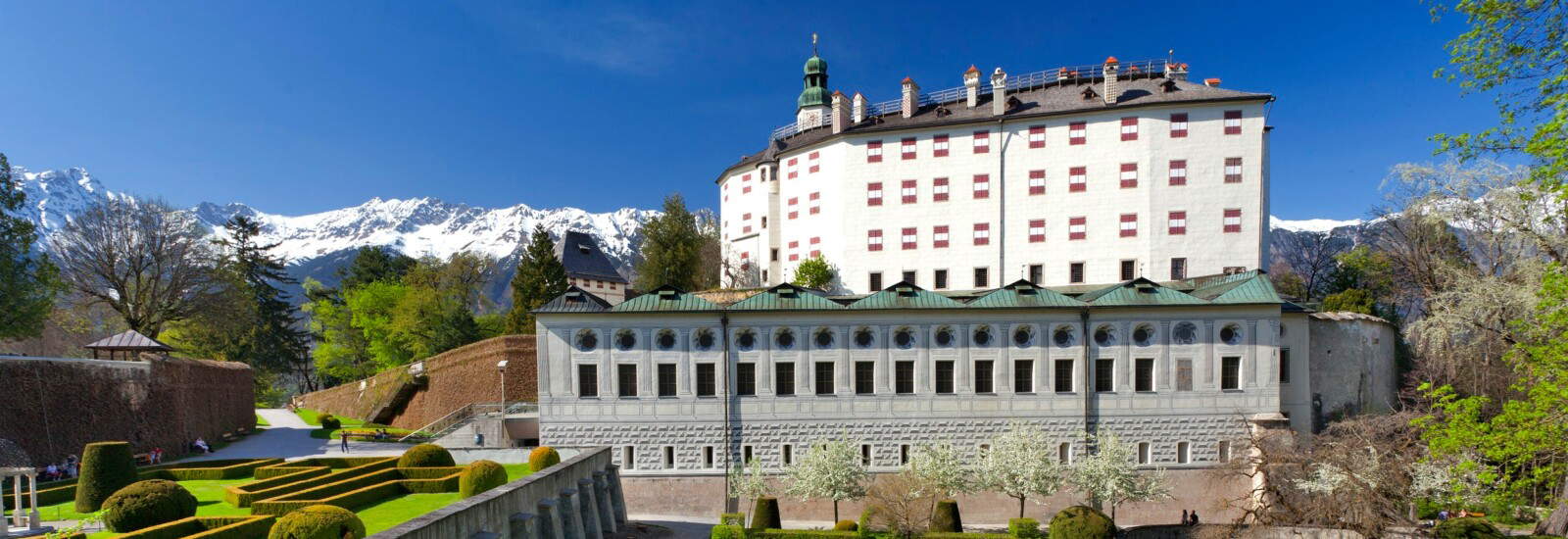 |
| Ambras Castle. Photo by Julius Silver / ©KHM Museumsverband |
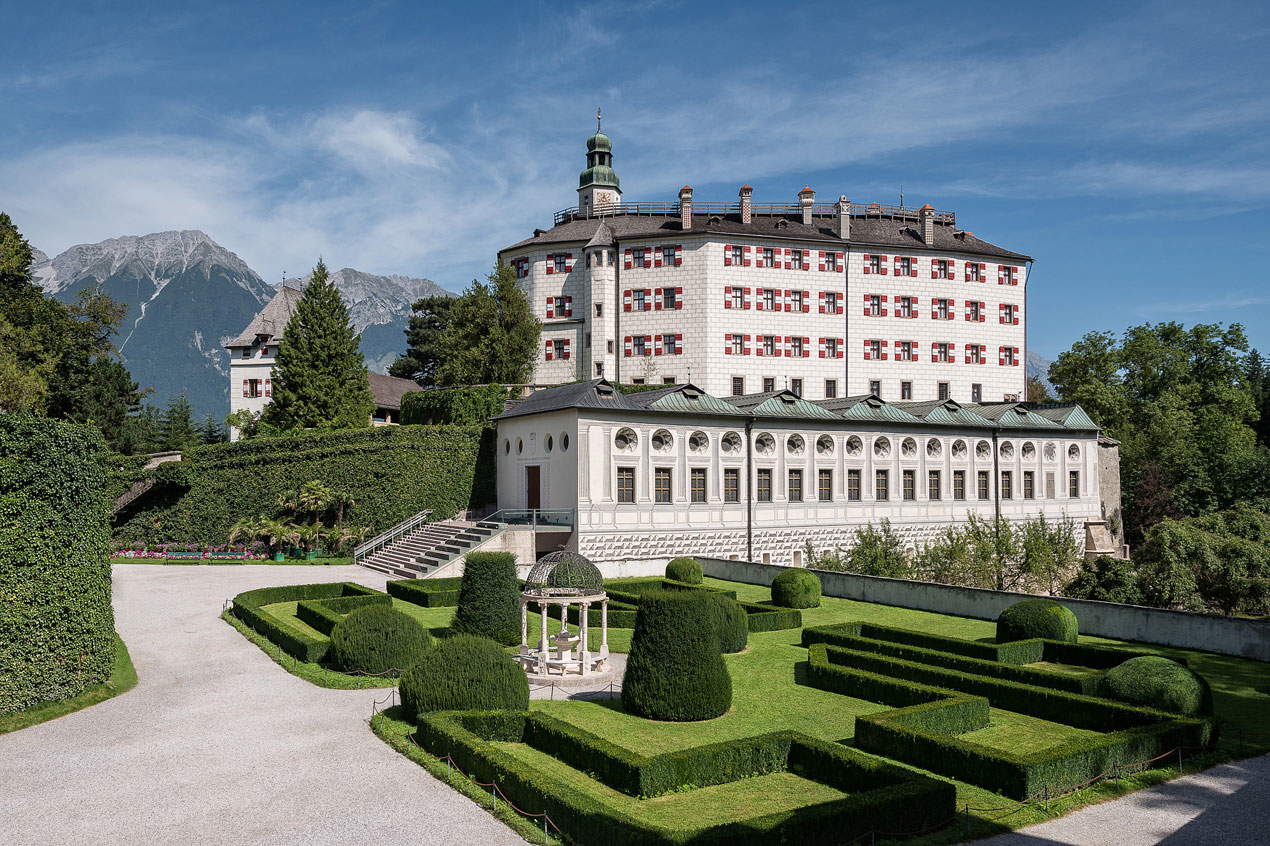 |
| Overview of the Castle. ©KHM Museumsverband |
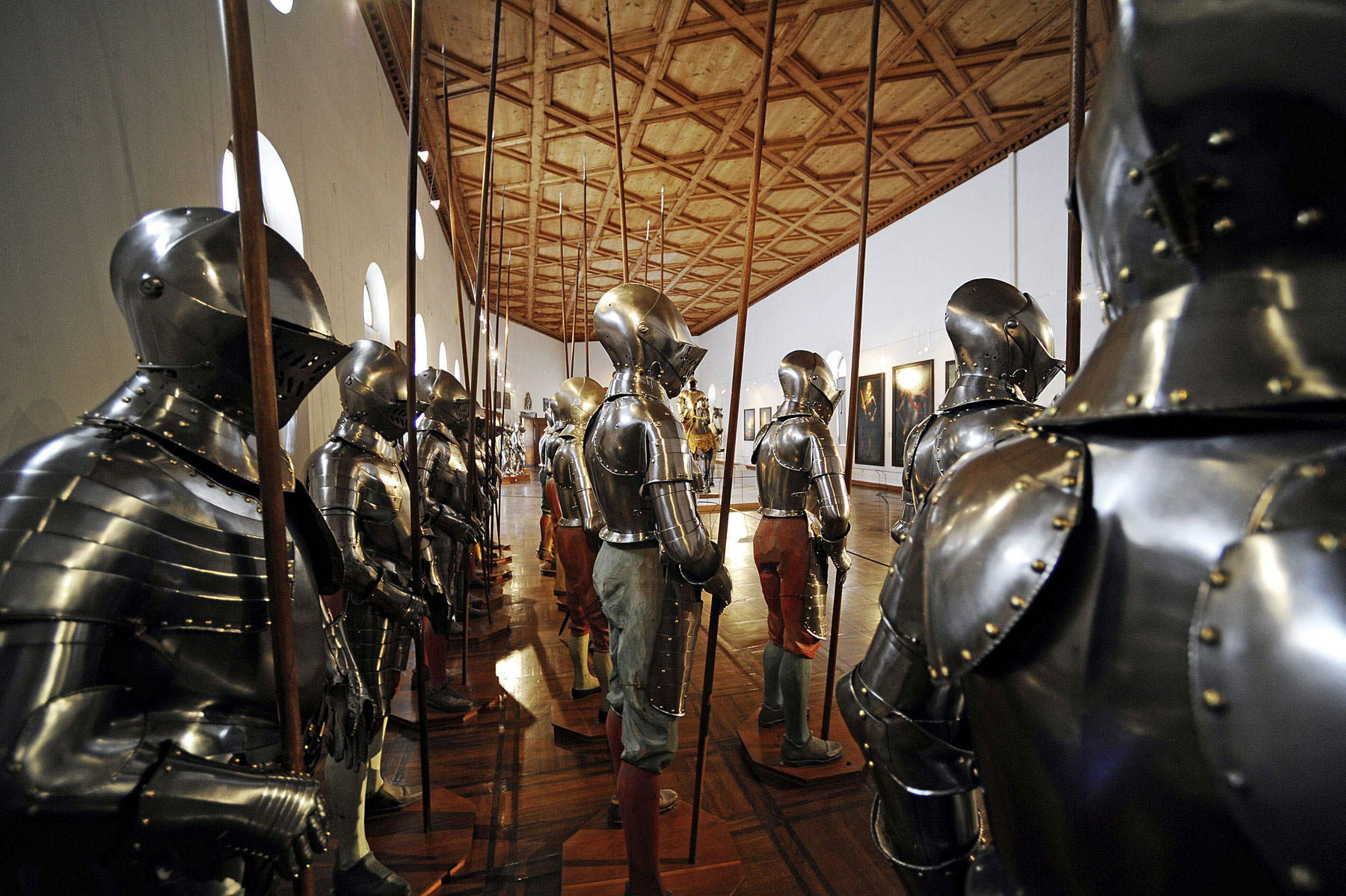 |
| The castle armory. Photo by Bernard Aichner / Innsbruck Tourism. |
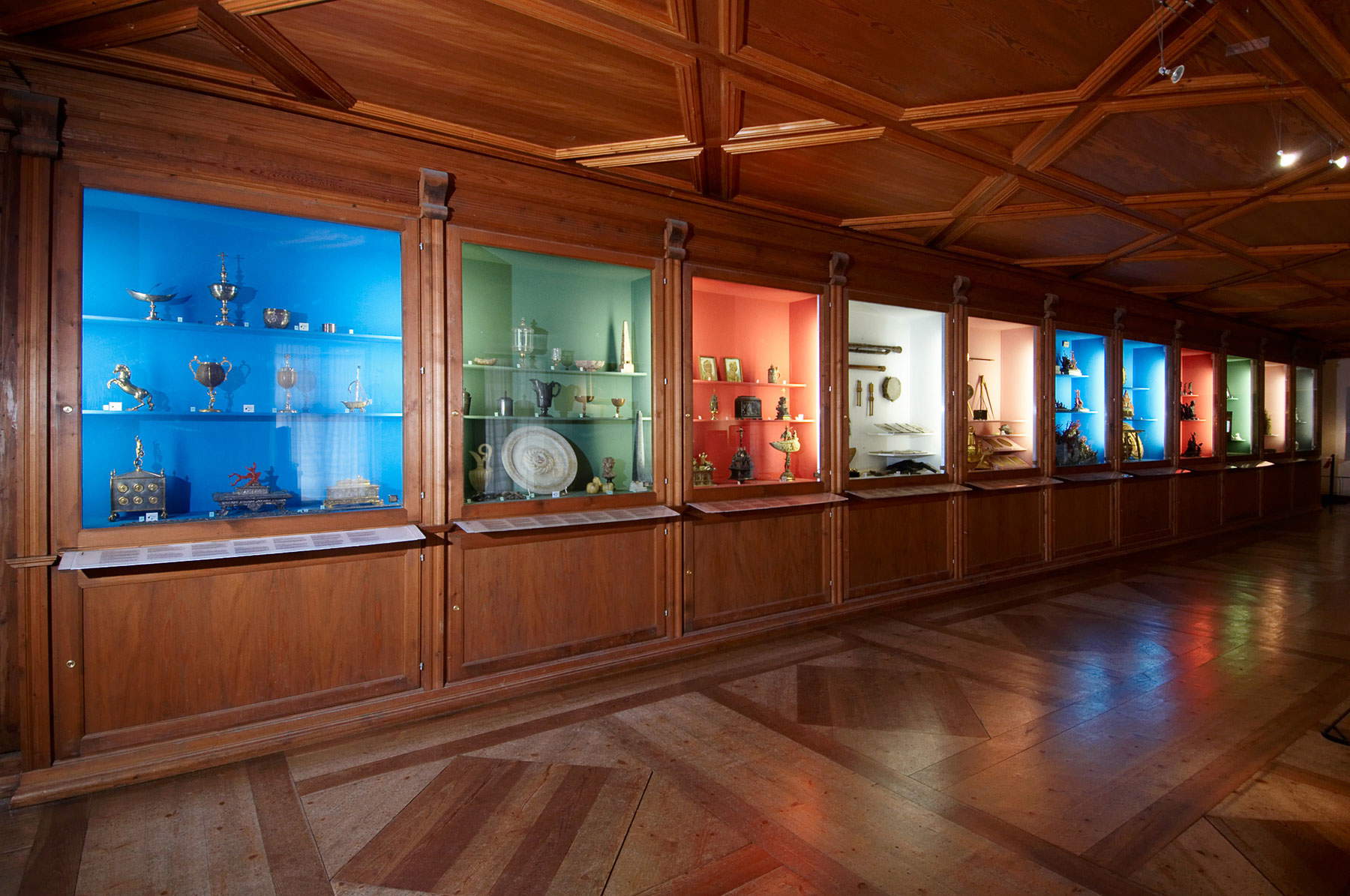 |
| Kunst- und Wunderkammern. ©KHM Museumsverband |
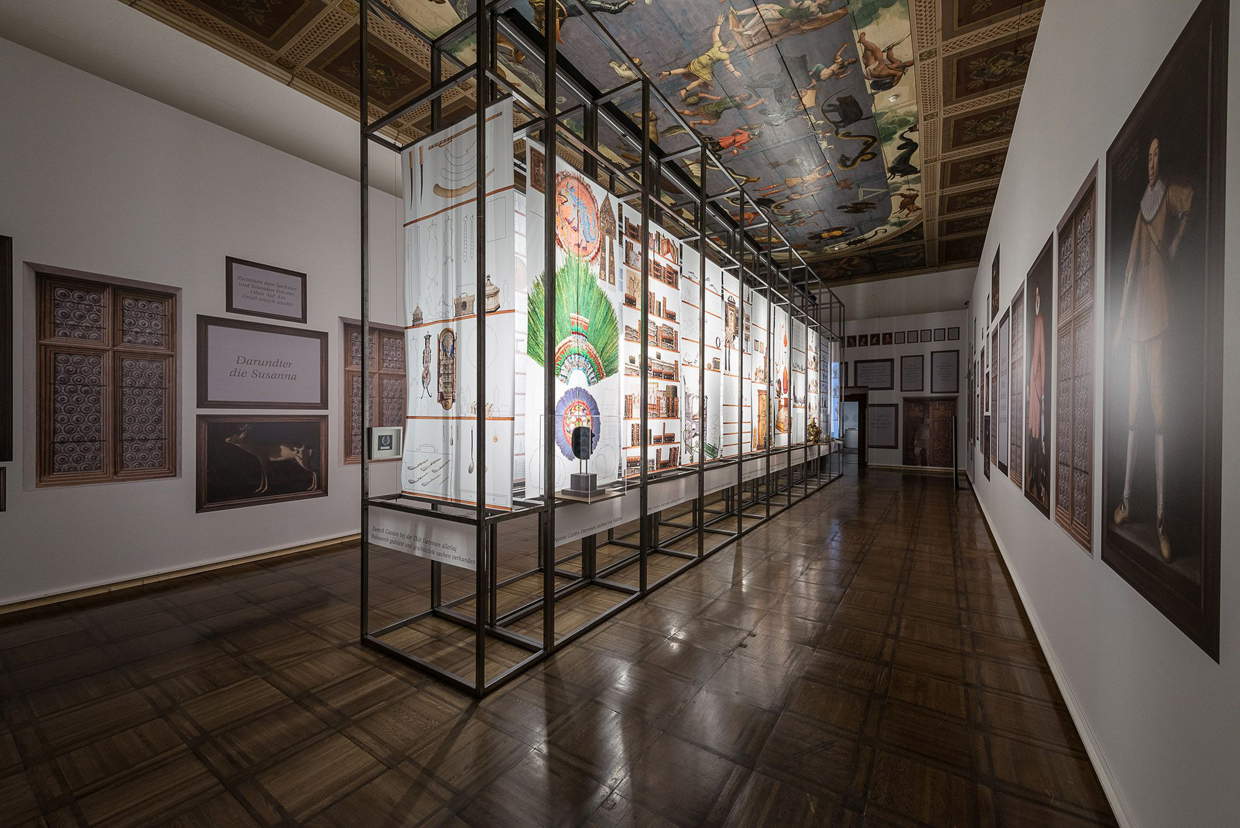 |
| Kunst- und Wunderkammern. ©KHM Museumsverband |
 |
| Spanish Salon. ©Zoonar GmbH Alamy Stock Photo. |
The third collecting nucleus is perhaps the most surprising: these are the Kunst- und Wunderkammern, the “Rooms of Art and Wonders,” in which the archduke collected works of art, objects and curiosities from all the then known world. As early as the second half of the 16th century, the fashion for Wunderkammer, the collections of bizarre objects reflecting the interest of the time in scientific discoveries, explorations, rarities, exotic objects, and the wonders of nature, had spread in northern Europe. Ferdinand II’s Wunderkammer is one of the largest and oldest in Europe, although the arrangement in which it is now admired by the public is not the original one, but dates back to 1974 (the design, however, remained faithful to the inventories of the time, and it can still be said that Ferdinand’s collection is the only existing Renaissance Wunderkammer to have remained in the place for which it was conceived). A wide variety of objects are part of the collection: there are crystals, pieces of goldsmithing, bronze and wooden sculptures, precious glass, unique paintings, coins, weapons, and naturalia, such as the famous corals, objects that Ferdinand II cared a great deal about. Among the most famous pieces in the collection are a Korallenkabinett (a small cabinet decorated with corals), a bronze frog of 16th-century Paduan ambit, the statuette known as the Tödlein that depicts death as an archer (it is the work of Hans Leinberger from 1519), a samurai armor from the 16th century, the famous portrait of Vlad III of Wallachia (a work from the second half of the 16th century, it is the most famous and iconic image of the character that inspired the figure of Count Dracula), a rhinoceros horn glass.
Ambras Castle is also known for a number of important rooms, beginning with the Spanish Hall, a hall entirely decorated with twenty-seven life-size portraits of Tyrolean rulers (although repainted during 19th-century restorations): the room, begun in 1569 and finished in 1572, was intended for balls and receptions, measures forty-three meters in length, has a rich coffered ceiling, and is ornamented with grotesques in the spaces between portraits (and moreover, concerts are still held there today). Another valuable room is the Chapel of St. Nicholas, one of the oldest rooms in the castle as it dates back to the 14th century, although its present appearance is due to work promoted by Archduke Charles Ludovic between 1863 and 1867, who had the layout dating from the time of Ferdinand II renovated, who in turn had called the Ticino cabinetmaker Giovanni Lucchese to Innsbruck to rebuild the chapel: Charles Ludwig commissioned the renovation from the architect Anton Geppert and the paintings still on the walls from the painter August Wörndle, whose task it was to completely repaint the chapel. The decoration traces 16th-century iconography, but does so in the style of the Nazarenes, the artistic movement to which Wörndle was linked.
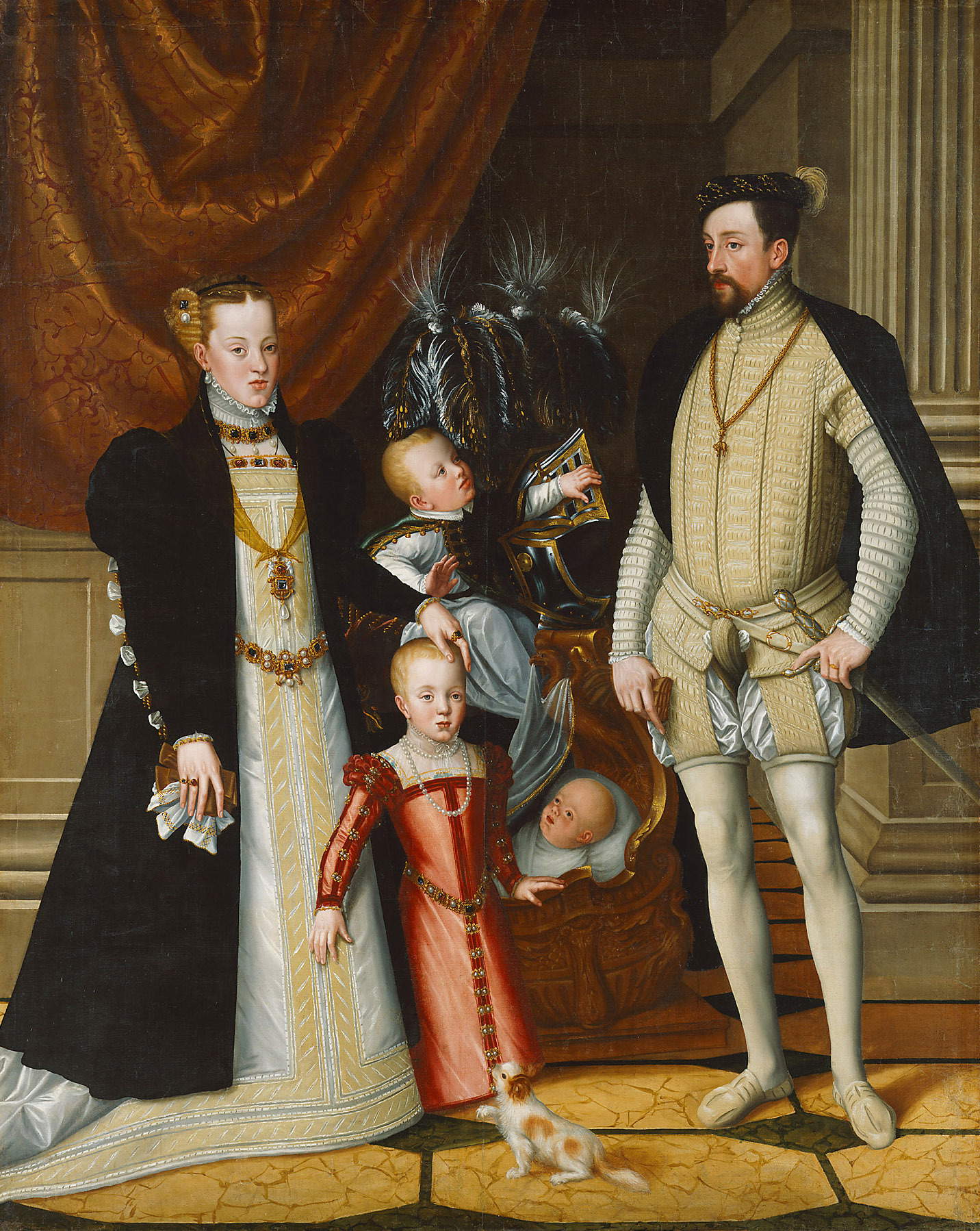 |
| Joseph Arcimboldo (attributed), Maximilian II with his wife Marina of Spain and children Anna, Rudolph and Ernest (c. 1563; oil on canvas, 240 x 188 cm; Innsbruck, Ambras Castle) |
 |
| Justus Suttermans, Anna de’ Medici (c. 1630; oil on canvas, 129 x 100 cm; Innsbruck, Ambras Castle) |
 |
| Lorenzo Lippi, Vittoria della Rovere (1626-1628; oil on canvas, 115 x 84 cm; Innsbruck, Ambras Castle) |
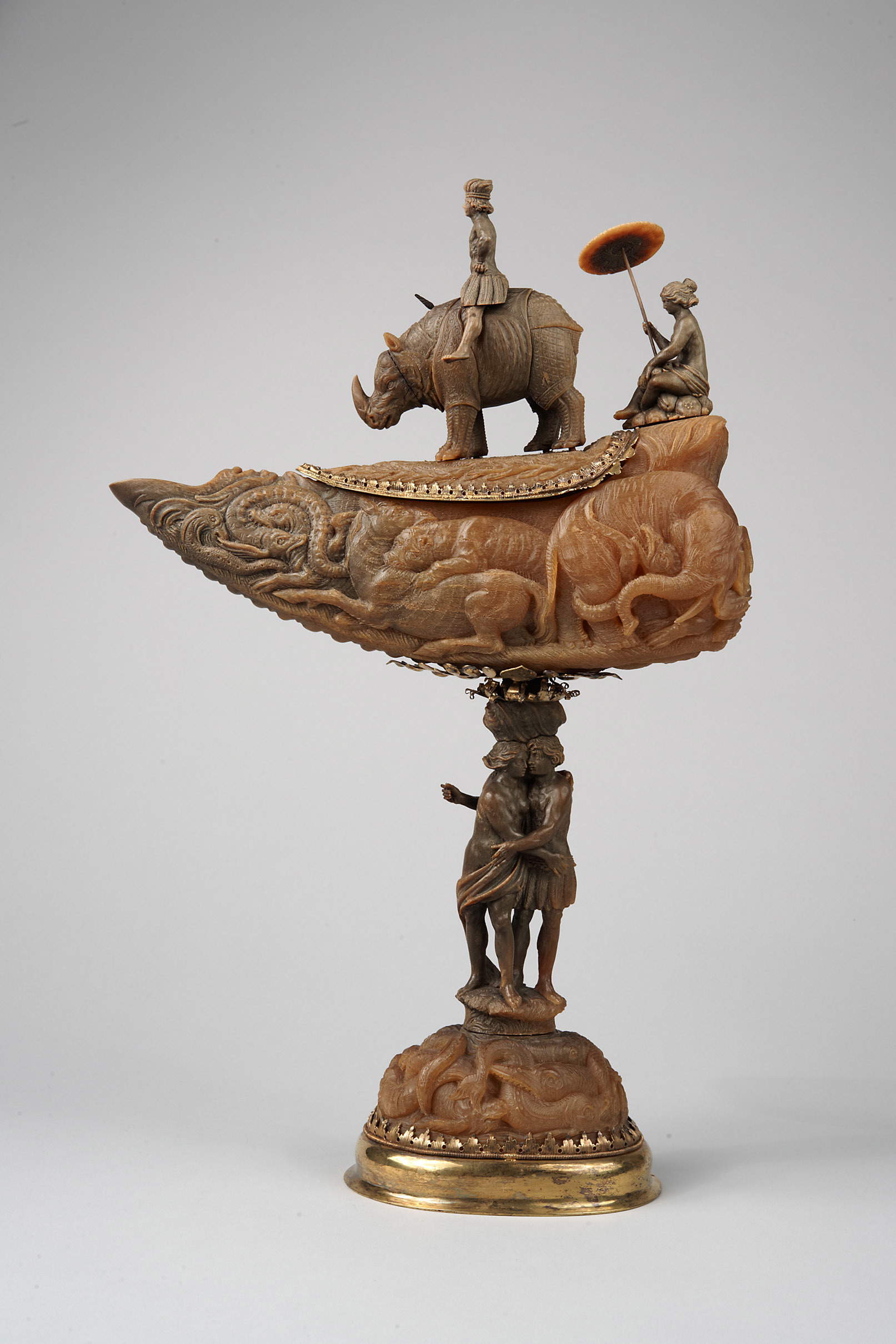 |
| Georg Pfründt (attributed), Cup with Lid (ca. 1650; rhinoceros horn, 45.5 x 29 cm; Innsbruck, Ambras Castle) |
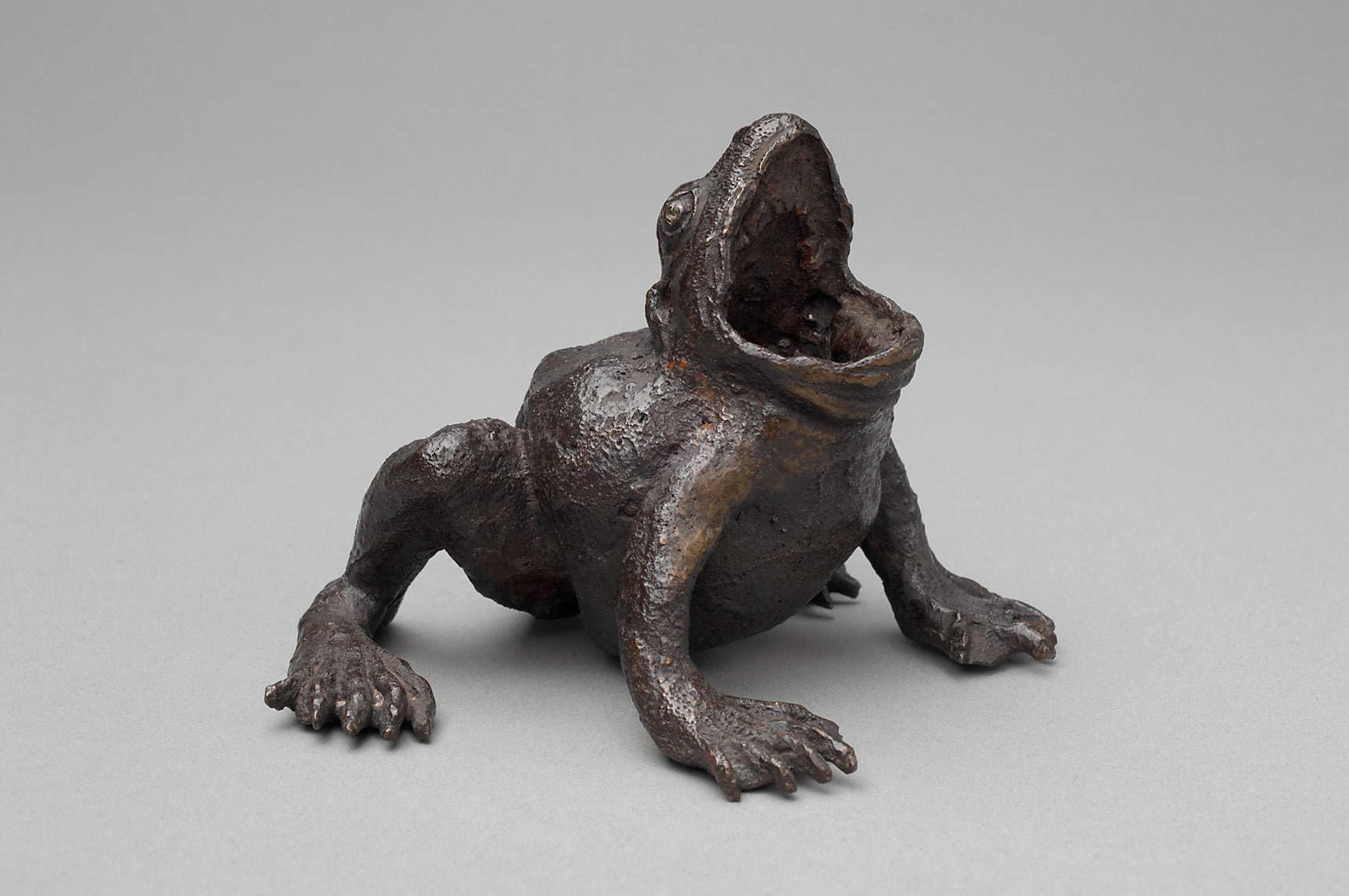 |
| Paduan ambit, Frog (early 16th century; bronze, height 16.8 cm; Innsbruck, Ambras Castle) |
 |
| German ambit, Portrait of Vlad III of Wallachia (second half of 16th century; oil on canvas, 60 x 50 cm; Innsbruck, Ambras Castle) |
 |
| The Korallenkabinett |
And what was Philippine Welser’s role in the castle that Ferdinand II gave her? The woman probably did not share her husband’s collecting passion: “There is no evidence of any interest on her part, partly because the marriage was kept secret for a long time since Philippine was a bourgeois,” confirms Director Sandbichler. “What we do know about her is that she was interested in herbs and medicinal plants: one of her cookbooks on this subject and one related to medicinal remedies is preserved.” The cookbook in question is Das Kochbuch der Philippine Welser, probably dating from 1545, although we do not know whether it is entirely in her own hand. However, it is certain that, at Ambras Castle, Philippine was personally in charge of the kitchens, devising dishes and recipes, since cooking was a passion of hers. And it is certain that the Kochbuch is to date the oldest cooking manuscript attributed to a woman in the German area. In addition, some rooms known as the “Philippine Bathing Rooms” have been preserved and are among the most interesting in Ambras Castle.
As is well known, the custom of bathing at the baths was deeply rooted in the Renaissance in the German area: many artistic testimonies survive that attest to the spread of this practice. The Bath Chambers are nothing more than a kind of 16th-century “spa”: these were very modern and luxurious rooms where the duchess could devote herself to body care in a heated bath, alone or in company. The tub was six feet high, and it was heated either by means of pipes or with stones that were thrown on the bottom (which was usually untouched by the bathers: they sat by the side of the tub or made use of stools, as also attested by the paintings of the time, from which we learn that everything was done inside a tub, often even lunch). The dressing room decorated with frescoes depicting, of course ... bathing scenes, as well as feasts and banquets, has also been preserved. The Bath Chambers were, in essence, rooms where time was spent pleasantly.
Not everything that was once in Ambras remained in the Castle: some works of art, books, manuscripts and prints took the road to Vienna in the seventeenth century, during the empire of Leopold I, and today most of these objects are preserved in museums and libraries in the capital. The castle itself underwent changes in structure during the time of the aforementioned Charles Ludwig, who had some rooms redone and remodeled the palace itself, as well as the park surrounding it. Instead, the transformation of Ambras Castle into a museum open to the public (the Museum Ambraser Sammlungen, the “Ambras Collections Museum”) dates back to 1880. After World War I and the end of the Austro-Hungarian Empire, the castle became the property of the newly created Republic of Austria: major renovations conducted between the 1970s and 1980s led the museum to assume its present appearance.
We know the history of the Ambras Castle collections very well thanks to the inventories that have been preserved, beginning with the one drawn up in 1596 immediately after the death of Ferdinand II. Thanks to these documents, we can know the objects that the Castle kept, we know what was their arrangement in the rooms, which pieces left the Castle and are now in other museums. These are also documents that have helped modern restorers set up the collections in a way that respects the ideas, spirit and taste of Ferdinand II as much as possible. “We try,” says director Veronika Sandbichler, “to restore to today’s visitors the same sense of wonder that Ferdinand’s guests felt when they entered.”
For more information about Ambras Castle, you can visit the official website austria.info.
Warning: the translation into English of the original Italian article was created using automatic tools. We undertake to review all articles, but we do not guarantee the total absence of inaccuracies in the translation due to the program. You can find the original by clicking on the ITA button. If you find any mistake,please contact us.